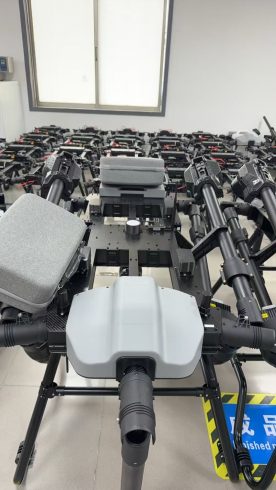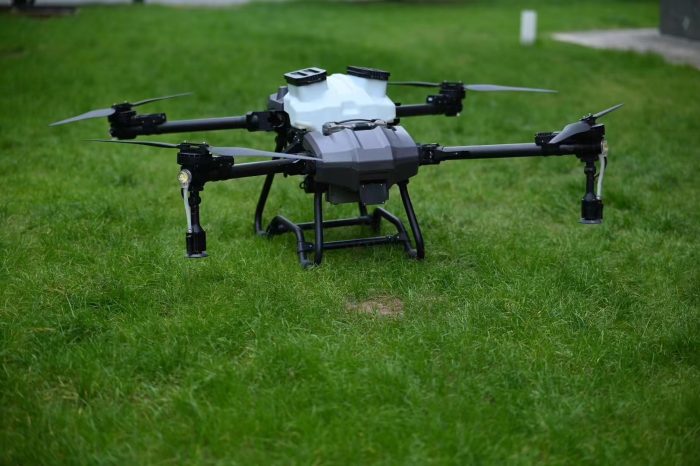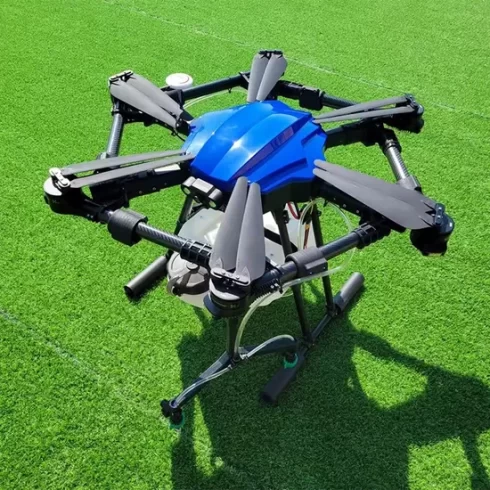![图片[1]-Drone Sprayers in Sugarcane Farming: Precision, Efficiency, and Sustainability in Sweet Harvests-msoen](https://www.msoen.com/wp-content/uploads/2025/04/2caef68db4184641-768x1024.jpg)
Sugarcane cultivation, a cornerstone of global biofuel and food industries, faces persistent challenges such as labor shortages, escalating pesticide costs, and environmental pressures. Traditional methods of chemical application in vast sugarcane fields—often reliant on manual labor or heavy machinery—are inefficient, inconsistent, and risk damaging fragile ecosystems. Drone sprayers for sugarcane farming are emerging as a transformative solution, combining precision agriculture with cutting-edge technology to address these challenges while optimizing yields and sustainability. This article explores how drones are revolutionizing sugarcane management, their unique features, and the key benefits they deliver.
Why Sugarcane Fields Need Drone Sprayers
Sugarcane is a tall, dense crop with sprawling canopies and long growth cycles, creating logistical hurdles for conventional methods:
- Pest and Disease Vulnerability: Sugarcane is prone to pests like borers and diseases such as smut and leaf scald, requiring frequent interventions.
- Labor-Intensive Practices: Manual spraying disrupts workflow and exposes workers to harmful chemicals in dense, hard-to-reach areas.
- Environmental Concerns: Runoff from flood irrigation or aerial sprays contaminates waterways, violating regulations.
Drones offer a scalable, safe, and eco-friendly alternative:
- Targeted Application: Minimize chemical use by focusing only on pest hotspots.
- Timely Interventions: Rapid response to outbreaks prevents yield losses.
- Access to Dense Canopies: Navigate thick foliage to treat lower stalks and soil.
Key Features of Sugarcane-Optimized Drone Sprayers
- Adaptation to Tall, Dense Canopies
Sugarcane’s vertical growth (often exceeding 3 meters) demands specialized drone systems:
- Height-Adjustable Nozzles: Automatically adjust altitude (2–12 meters) to target different canopy layers and soil zones.
- Penetrating Spray Technology: High-pressure nozzles and air-assisted diffusion ensure chemicals reach lower stalks and root zones.
- Obstacle Avoidance: LiDAR and thermal sensors detect stalks, irrigation lines, and field debris to prevent collisions.
- Precision Spraying Systems
- Variable Rate Control: Sync spray output with real-time data on pest density or soil moisture.
- Multispectral Imaging: Use NDVI maps to identify stressed areas (e.g., waterlogged roots or nutrient deficiencies).
- Anti-Drift Nozzles: Reduce mist drift to protect neighboring crops and comply with regulations.
- AI-Driven Pest and Disease Detection
Advanced drones integrate AI to enhance decision-making:
- Borer Egg Detection: Algorithms analyze imagery to spot pest eggs before hatching.
- Smut Fungus Identification: Machine learning models flag early signs of fungal infections.
- Swarm Coordination: Fleets of drones automate spraying across large-scale plantations.
- Extended Flight Time and Power
Sugarcane fields require repeated applications during long growth cycles:
- 100–150 Minute Flight Time: Covers 20–25 hectares per charge, ideal for seasonal peak demand.
- Fast-Swap Battery Packs: Enable uninterrupted spraying during flowering or harvest phases.
- Solar-Compatible Designs: Extend uptime in sunny, remote regions.
Benefits of Drone Spraying in Sugarcane Farming
- Reduced Chemical Usage
Targeted application cuts pesticide use by 35–50%, lowering costs and minimizing environmental harm. - Labor Efficiency
Replace manual crews with drone operators, saving time and reducing health risks from chemical exposure. - Higher Yields
Timely pest and disease control protect sugarcane stalks, boosting yields by up to 25%. - Compliance and Sustainability
- Meet strict regulations on chemical runoff and water quality.
- Align with sustainability goals (e.g., UN SDG 12: Responsible Consumption).
Application Scenarios in Sugarcane Cultivation
- Early Growth Stages
Monitor seedling health and apply starter fertilizers uniformly across rows. - Vegetative Phase
Target borers and smut fungi with precision, preventing infestations. - Pre-Harvest
Control weeds and apply growth regulators to maximize sugar content.
Future Trends in Sugarcane Drone Technology
- Hydrogen Fuel Cells: Extend flight times to 5+ hours for marathon spraying sessions.
- Under-Canopy Drones: Specialized models to treat lower stalks without disturbing foliage.
- Blockchain Integration: Track chemical usage and sugar quality for premium market access.
Implementing Drone Sprayers: A Checklist
- Assess field size, pest history, and growth stage requirements.
- Choose drones with height-adjustable nozzles, obstacle avoidance, and AI analytics.
- Train operators on software for geo-fencing and variable-rate spraying.
- Partner with local regulators to ensure compliance with pesticide guidelines.
Conclusion
Drone sprayers are redefining efficiency and sustainability in sugarcane farming. By combining precision, scalability, and adaptability, these technologies empower farmers to tackle labor challenges, optimize inputs, and protect yields. As AI and renewable energy innovations advance, drone sprayers will become indispensable tools for meeting global sugar demand while preserving natural resources.
Key Takeaways:
- Sugarcane-specific drones excel in dense canopies with height adjustment and penetrating spray tech.
- AI-driven features optimize chemical use, reduce labor, and boost yields.
- Future advancements like hydrogen fuel cells will enhance endurance and scalability.
Investing in drone sprayers for sugarcane fields is a strategic leap toward smarter, sustainable agriculture—one where every drop of pesticide and every stalk of sugarcane is optimized for maximum impact.









暂无评论内容